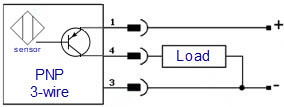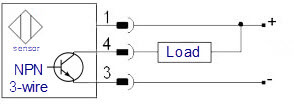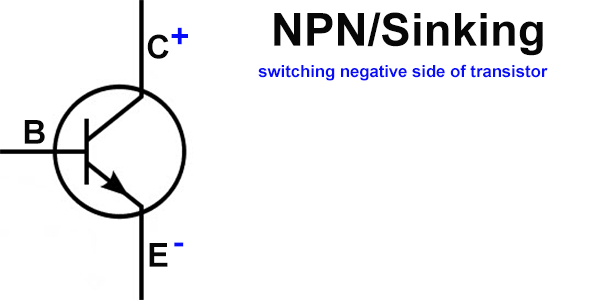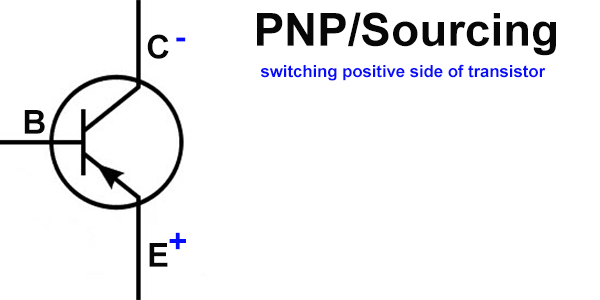Two of the most important fundamentals to understand when it comes to sensors is sinking and sourcing circuits. To properly wire your control device, you need to first know whether the sensor you are using is switching the positive or negative connection. For AC (alternating current) sensors, this is not an issue since AC power alternates it polarity 120 times per second with 60-hertz current and AC sensors are designed for that. On the other hand, DC (direct current) sensors only allow current flow in one direction and therefore have a constant polarity that must be considered.
With DC sensors, NPN and PNP may be terms you hear quite often. These terms define the Collector, Base and Emitter polarities of the transistor itself. In these transistors, the switching ON and OFF is accomplished between the Collector and Emitter legs, and the Base (controlled by the sensor) will determine when that happens. How the transistor goes about closing the control circuit will determine if it’s a sinking or sourcing contact.


NPN
For the NPN transistor, when a positive polarity of sufficient voltage is applied to the Base, a small current will flow across the Base-to-Emitter junction. This small current opens the path for a larger positive current from the Collector to flow to the negative Emitter. In this case, when the transistor’s Collector-to-Emitter junction closes, it is effectively a switch completing the circuit on the negative side of the load. In other words, the transistor is sinking the supplied current flowing through the control device.

PNP
With a PNP transistor, once a negative polarity of sufficient voltage is applied to the Base, a small current flows across the Emitter-to-Base junction. This small current opens the path for the Emitter’s positive current to flow to the negative Collector. In this case, when the transistor’s Emitter-to-Collector junction closes, it is effectively a switch completing the circuit on the positive side of the load. In other words, the transistor is sourcing the supplied current flowing to the control device.

It is imperative that you use the right sensor configuration for your control circuit. Many DC sensors today include both types of transistors, so you can easily match them to the control device you are using.
For more on sensors and many other PLC topics, visit our FREE Online PLC Training Portal to take advantage of Interconnecting Automation’s online PLC video training series.
To read more articles about programmable control, click here.
Originally Published: February 2019


